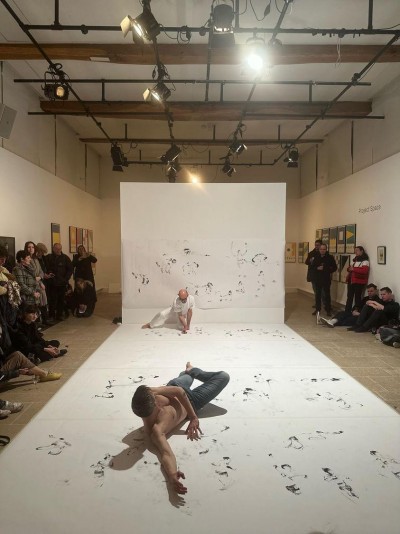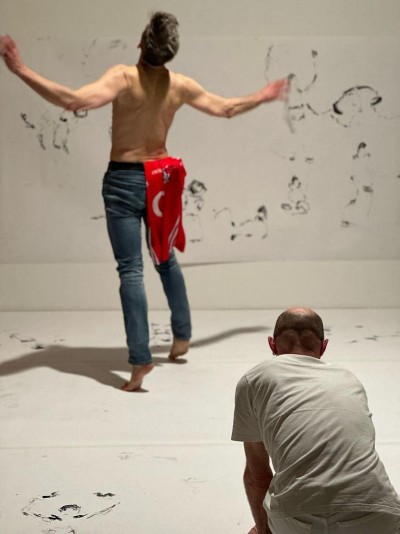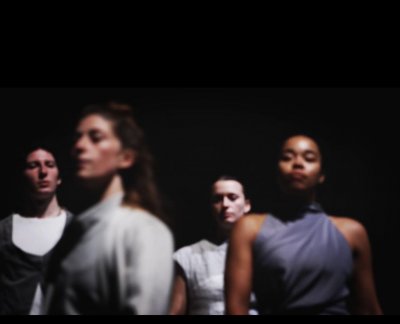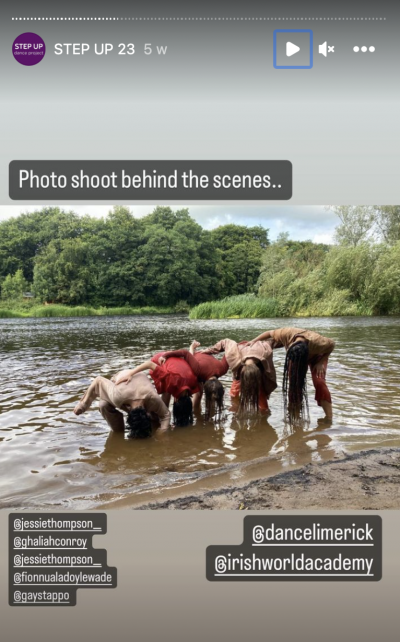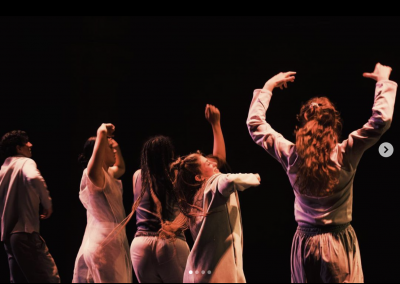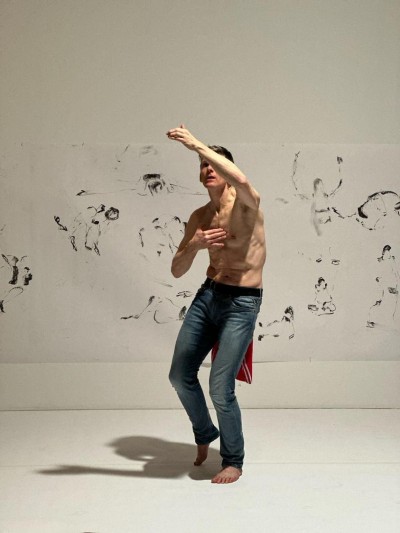 As part of the Centre Culturel Irlandais’ programming for the Paris Olympic year, its director Nora Hickey M’Sichili has assembled an exhibition on Gaelic Sports in the centre. It’s the third in a series of art and sport exhibitions she’s programmed there this year and the Gaelic Games focus meant she invited me to present my GAA dance films, Match and Abú alongside beautiful work by photographer Amelia Stein, designers Camán and Co., sound artist Úna Monaghan, photographer Paul Carroll and visual artist James L. Hayes. It’s always a privilege and a pleasure to insert dance into these contexts and I was delighted to have Match and Abú resonating with the work around it, whether it was the shared warrior attitude of Erin, the young camogie player in Abú, and the soldiers in Amelia Stein’s portraits, or the green grass of pitches in Paul Carroll’s photos and Croke Park in Match, or indeed the vibrant team colours in Camán and Co’s design and the kit on the dancers.
As part of the Centre Culturel Irlandais’ programming for the Paris Olympic year, its director Nora Hickey M’Sichili has assembled an exhibition on Gaelic Sports in the centre. It’s the third in a series of art and sport exhibitions she’s programmed there this year and the Gaelic Games focus meant she invited me to present my GAA dance films, Match and Abú alongside beautiful work by photographer Amelia Stein, designers Camán and Co., sound artist Úna Monaghan, photographer Paul Carroll and visual artist James L. Hayes. It’s always a privilege and a pleasure to insert dance into these contexts and I was delighted to have Match and Abú resonating with the work around it, whether it was the shared warrior attitude of Erin, the young camogie player in Abú, and the soldiers in Amelia Stein’s portraits, or the green grass of pitches in Paul Carroll’s photos and Croke Park in Match, or indeed the vibrant team colours in Camán and Co’s design and the kit on the dancers.
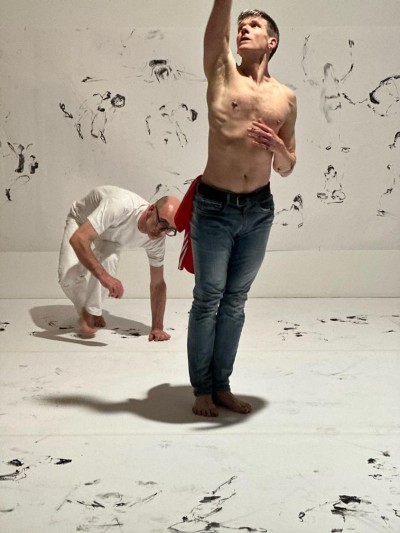
For the exhibition opening, Nora invited me to present with visual artist Gabriel Schmitz again another version of the dance and drawing encounter we had performed for an invited audience at CCI in June. I realised as I was preparing to introduce the event that I’ve known Gabriel since before I started dancing. We were first introduced by my long time friend, the sculptor Tove Hirth when she and Gabriel were both studying at the College of Fine Art in Edinburgh and I was at Oxford. Our paths crossed through Tove over the years but it wasn’t in dance until much later. In 2011, when I was presenting Tabernacle in Barcelona, where Gabriel lives, he came to sketch some of the rehearsals and produced some beautiful paintings with images from the work as inspiration. He continued working with other dancers subsequently and gradually developed a practice of live sketching alongside dance improvisations and performances. Among the dance artists he’s worked with is Elena Giannotti who was in the Tabernacle rehearsals he first visited. You can read some of his text on dancing and drawing in the 2018 entry here:
To paint or draw a dancer is a challenge. And I am not speaking of rendering anatomy in a convincing way, nothing could interest me less. I am speaking of the attempt to catch a glimpse of what is behind the appearance of things. Dance as I experience it comes close to naming the unnamable, rare moments when the veil falls away and the essence of things surfaces, a kind of truth that does not filter through reason. Raw material.
Also among the dancers Gabriel saw in Tabernacle was Matthew Morris whom I could see on the screen in Match as I danced at CCI. I’m increasingly aware of and sensitive to these links across time and space that traverse my dancing body. Remembering and finding again people and experiences that have shaped who I am as I move now.
Standing in the middle of the Gaelic Sports exhibition, I felt strongly that though I hadn’t yet started my dance training when I met Gabriel, I had been trained by the GAA environment I grew up in and that I could feel from the variety of work around me. I’ve been shaped by a culture, by habits, by practices and the movements and emotions they evoke. I try to recognise and move with all of this legacy as I dance.
And as a more concrete nod to that legacy, I wear the Cork jersey that we bought for Match almost twenty years ago. I didn’t wear it n the film but we did use them in our live performances. The jersey has been to Italy, China, London, Cyprus, Spain and now France.
The photos above are from Olivier Debienne. And this video is from Iranian choreographer and film-maker Tanin Torabi, whom I haven’t see since she did her MA in Limerick. More connections across space and time.

